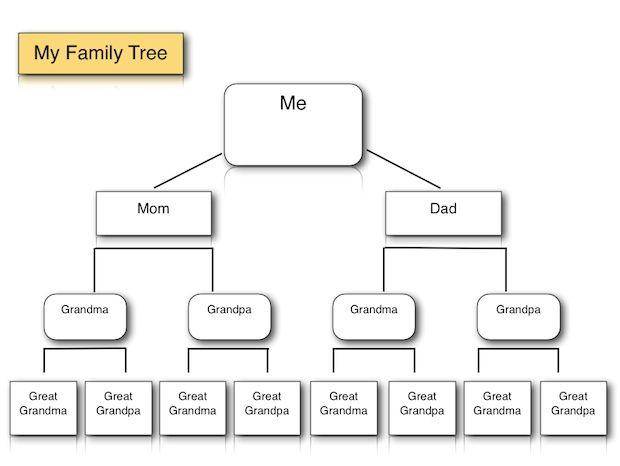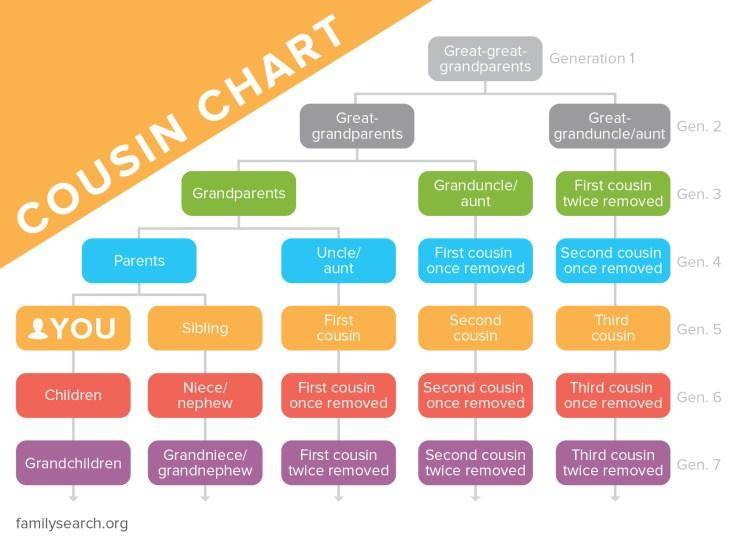Table of Contents
How Family Trees Work: Understanding The Relationships In Family Tree
Wondering how family trees work? Family trees are not as easy to understand as we think when it starts including all kinds of relationships from our maternal side and paternal side including uncles and aunts we have never seen. It becomes quite a headache to understand how family trees work.
However, if you have a family tree that includes a lot of cousins while some are missing, do not worry. It might take some time but with great tips and information, you will be able to understand easily how family trees work. Let’s get started with the basics of a family tree.
What Is A Family Tree?

The most common mode of documenting or understanding visually the relationships and shared ancestry of a family, we build a family tree. Most of the family trees often include boxes representing each individual and each box is attached to other boxes mentioning other individuals. These boxes are connected through lines that show the relationship between both.
There are different levels in which generations are characterized. Each generation has a single line in which they are placed. The line of the generation above them indicates their ancestry.
How Family Trees work?

As we already know the family tree is an excellent visual tool that helps us explore our family genealogy. It does not matter if you are retracing your lineage for a project assigned in school, or fascinated to learn in detail about your forefathers.
Researching everything about the history shared by your family is immensely helpful in uncovering deeper understandings of how family trees work and where you stand in the family trees. It is also useful in finding where you initially came from.
Despite the simple appearing concept of a family tree, there are specific terms of kinship and genealogy associated with it. These terms are quite difficult to understand when you have just begun researching about the family and building your family tree. Keeping all the questions in mind, we have gathered all the needed information for you on how family trees work.
This guide will help you understand the different relationships existing in a family. Read all the related information carefully to understand your genealogy better and how family trees work.
Different relationship terms
If you wish to learn how family trees work, knowing different relationship terms is crucial, these include affinal and consanguine.
When you are trying to make a family tree that not just includes your parents and grandparents (immediate Family tree), you will certainly run into unknown terminologies like an affinal relationship or consanguine relationship. These terms are tricky but highly important if you want to learn how family trees work.
Affinal
An affinal relationship in kinship terminology means “By marriage”. It simply means “in Law” when you see it on a family tree.
Consanguinity
This term is directly translated as “Of the same blood”. You can simply understand this term as “related by blood” or “blood relation”. This category comprises your parents, grandparents, great grandparents, uncles, brothers, aunts, sisters, and cousins that share similar blood.
When you are set to design a family tree for yourself that does not just revolve around your parents, you need to make sure to distinguish between people who are related to you through marriage and people you are bound with blood. You can use any marks to indicate this. You can also use suffixes or prefixes like “in-law” to make it easier and avoid confusion.
Genealogy Terms To Understand How Family Trees Work
Genealogy terms like The great, Grand, and The great-great-grand should be familiar to you. When you have decided to include all your relatives it is important to consider all the irreplaceable roots of your family without which you might have not born these are your parents, their parents, and their parent’s parents. When you use the right terms and places for your grandparents, it becomes very easy to place your uncles and aunts in the right order.
Tracing your great grandparents or great-great-grandparents is not an easy task as it will consume a lot of time to find records and traces with pictures. Sometimes you may end up with nothing in your hands even after tracing for days.
There are a lot of branches of your first or second cousins that have emanated from great-great-grandparents that you have to mention when creating a larger tree. When you have decided to mention generations beyond great-great, you will be using numerical terminology to carry out the work. For example, third-generation great grandparents or fourth-generation great grandparents and so on.
Due to the high generation gap between you and your forefathers (great-great-grandparents), there could be some information that is highly difficult to trace such that you might end up losing a lot of information. To expand the branches more of your family tree, you have to try harder, seek help from all the known relatives that are elderly.
Cousin Kinship terms

When you involve in a family gathering you often hear terms like “third cousin removed twice”, this phrase sounds tricky and you might not understand the significance behind it.
Do not worry, it is very common in large families to have a third cousin twice removed. Twice removed simple means your cousin’s grandchild or grandparent. It can also mean your grandparent’s cousin in some context.
Let us proceed to understand how family trees work by understanding the degrees of cousins involved.
Degrees Of Cousins
There are few degrees of a cousin in your large family that you should know when designing a family tree.
Let’s see each one.
First Cousin: Those cousins with whom you share the same grandparents but they are not your true sublings.
Second Cousins: Those cousins with whom you share the same great grandparents as you.
Third Cousins: This generation of cousins share the same great-great-grandparents with you.
Another term that is very often in use is “removed”. This term simply signifies how many generation gaps are present between you and a particular cousin. It is just to know how many generations apart you and your cousin are. This can be more easy to understand through an example, Your second cousin twice removed simply means he is the grandchild of your second cousin. They are removed from you or the gap in between is of two generations.
Table Of Consanguinity
To understand how family trees work, tracing every relationship in your family chart is often confusing. To avoid more confusion, a Table of consanguinity is designed. It is amazing to avoid unwanted headaches of counting every relationship you share.
This table is specially created to help you proceed step-by-step through all the relatives. Once you are able to establish all the connections shared among the family, it can help you learn more precisely and easily about your ancestors. You can also learn about different families arising from your family tree using this table.
Build Your Own Family Tree!
With the clear information provided above on how family trees work and how to understand a family tree it is quite clear you are ready to make one for your family too.
You may seek help from elders and sometimes local newspapers too because in the community section you may end up finding a lot of stories on your ancestors having done great work for society.
Do not set back and create your family tree today itself. If you wish to know all the information on how to create your own family tree, refer to this article to get started.

